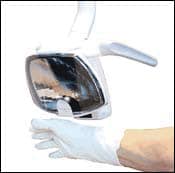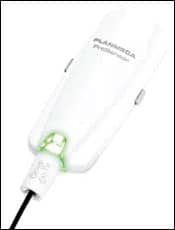with Nina Likins
Planmeca USA’s new products include an LED operatory light, a digital sensor, and an ambidextrous patient chair
 |
Nina Likins is the director of marketing for Planmeca USA, Roselle, Ill. Likins is responsible for the introduction of all Planmeca’s new products, along with piggyback promotions of Planmeca USA’s chair, unit, and cabinet line with the company’s preferred x-ray products.
Orthodontic Products: What makes Planmeca’s SingLED operatory light unique?
Nina Likins: Planmeca’s new LED technology has created a light that provides shadow-free and consistent color-corrected illumination throughout the light pattern, which minimizes eye strain, even during long dental procedures
Planmeca’s new single-LED operating light provides a hands-free solution to infection control for turning the light on or off as well as providing adjustable settings throughout the color temperature range. Additionally, the LED light requires only 1/10 the energy required to operate a typical multi-LED operating light.
This translates into a greenhouse emissions reduction. Over a 12-month period, our single-LED technology light accounts for 9.5 pounds of CO2, compared to 90 pounds of CO2 for multi-LED designs.
 |
| SingLED operatory light |
OP: How does the PM 270 dental chair accommodate those with disabilities?
Likins: Planmeca designed the PM 270 chair with an adjustable armrest that can be retracted down to the seat upholstery to accommodate virtually any patient, including those with disabilities and those patients who require a wheelchair.
OP: What makes the PM 270 ambidextrous? How is this useful?
Likins: Planmeca designed the PM 270 chair for maximum flexibility and customization. Orthodontists use their right and left hands during many procedures, and some operatories favor one side of the chair over others. The PM 270 allows orthodontists to adapt accordingly by providing adjustable armrests and mobility.
OP: How does Planmeca’s ProSensor digital imaging system differ from other sensors on the market?
Likins: The ProSensor was designed to withstand the rigorous use that frequently occurs in a dental office. The cable is strengthened with Kevlar, and inside the cable there are only two wires. This construction has proved extremely durable in testing consisting of bending the cable more than 100,000 times.
 |
| ProSensor digital imaging system |
Additionally, the active imaging area of the sensor extends to the whole surface for maximized imaging performance. Hermetically sealed, the sensor can be fully immersed in disinfectant for infection control and prevention. The ProSensor is available in three sizes: 0, 1, and 2. Each is easily distinguished from one another with a clear symbol on the magnetic connector.
OP: In your opinion, what is the “next big thing” in orthodontic technology?
Likins: Cone beam technology has been a defining paradigm in the dental industry. While the market is still in its infancy, future trends will continue to recognize the benefits of the superior technological advances CBCT offers, such as decreasing the time it takes to provide orthodontic care.
OP: What’s next for Planmeca?
Likins: Planmeca is launching the Promax MAX, a full field-of-view CBCT.







